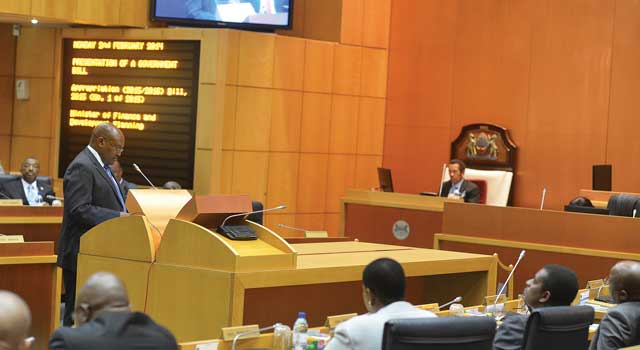In a week, the final curtain will fall on 2015 and a new year will dawn. As the year comes to a close, it is apposite that we take stock of the economic state of the nation to draw a covenant for 2016. On the whole, the economy ends 2015 on a low note, therefore, there is a need to challenge ourselves to do better in 2016 as 24/7 citizens for the state should not be the sole focus of growing and developing the economy.
In order to measure the economic state of the nation in 2015, two documents, being the 2016/17 Budget Strategy Paper and 2015 State of the Nation Address, are very crucial. Other crucial documents are the 2015 Global Competitiveness Report and 2015 Human Development Report (launched in Addis Ababa [Ethiopia] on 14 December 2015). On 24 August, the Ministry of Finance and Development Planning (MFDP) shared the 2016/2017 Budget Strategy Paper (BSP) with stakeholders. The Budget Strategy Paper, which is a precursor to the 2016/2017 budget, provided a very sobering reading for it unambiguously painted a difficult economic situation during the current fiscal year. To summarise topical points, it forecast a growth rate of 2.6% (MFDP, 2015; 2016/2017 Budget Strategy). Vital to note, this was a revision of the 4.9% growth rate forecast in the original budget that was read to parliament by the Minister of Finance and Development Planning, Kenneth Matambo, on 9 February 2015. In the main, the downward revision was due to expected decreases in the demand for diamonds. In the end, total revenues and grants for the revised budget were estimated at P51.69 billion, thus, this would translate into a budget deficit of P4.03 billion, consequently, undermining fiscal balances posted since 2012/13. This scenario promptly galvanised the government to introduce the Economic Stimulus Programme (ESP) on 10 October 2015.
The 2015 State of the Nation Address, read to the Botswana parliament by President Ian Khama on 9 November, reiterated sentiments that were expressed by the Ministry of Finance and Development Planning by way of the 2016/2017 Budget Strategy. As was widely expected, President Khama stated that the ESP, amongst other policy tools, would be deployed to deal with the vexing issue of a subdued economy. In formally championing the ESP, he stated that ‘… the ESP that I unveiled last month is a holistic action plan for achieving the goals of stimulating economic growth, accelerated employment creation and the promotion of economic diversification (Khama, 2015; 2015 State of the Nation Address, p. 2).’ He further stated that the following had been identified as key sectors that would drive the ESP: Infrastructure; Agriculture; Tourism; Manufacturing and Services; and the Economic Diversification Drive (ibid). In a related vein, the Global Competitiveness Report 2015-16 mirrored previous reports; low global competitiveness and national productivity. Thus, if Botswana is to weather the storm of a subdued economic growth, these two issues need to be immediately addressed.
Concluding, despite Botswana posting impressive Human Development indices (see Human Development Reports; 1980-2015), it ends 2015 on a very low. Therefore, there is a need to challenge ourselves to do better in 2016 if we are to deliver Vision 2016.

